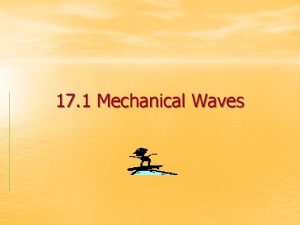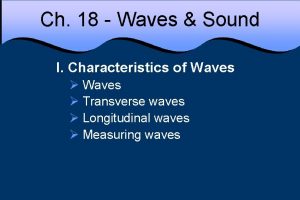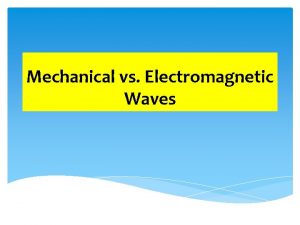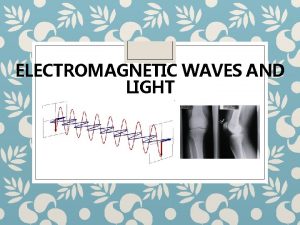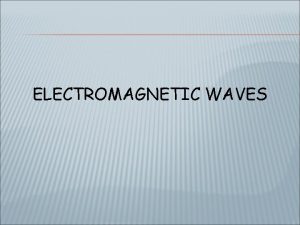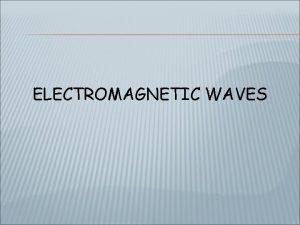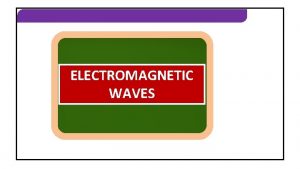PLANE ELECTROMAGNETIC WAVES Electromagnetic waves Mechanical waves require












- Slides: 12

PLANE ELECTROMAGNETIC WAVES

Electromagnetic waves • Mechanical waves require the presence of a medium. • Electromagnetic waves can propagate through empty space. • Maxwell’s equations form theoretical basis of all electromagnetic waves that propagate through space at the speed of light. • Hertz confirmed Maxwell’s prediction when he generated and detected electromagnetic waves in 1887. • Electromagnetic waves are generated by oscillating electric charges. • The waves radiated from the oscillating charges can be detected at great distances. • Electromagnetic waves carry energy and momentum. • Electromagnetic waves cover many frequencies.

Maxwell’s Equations In his unified theory of electromagnetism, Maxwell showed that electromagnetic waves are a natural consequence of the fundamental laws expressed in these four equations:

Lorentz Force Law • Once the electric and magnetic fields are known at some point in space, the force acting on a particle of charge q can be found. • The force is given by • Maxwell’s equations with the Lorentz Force Law completely describe all classical electromagnetic interactions.

Plane electromagnetic waves • The components of the electric and magnetic fields of plane electromagnetic waves are perpendicular to each other and perpendicular to the direction of propagation. • This can be summarized by saying that electromagnetic waves are transverse waves. • The figure represents a sinusoidal em wave moving in the x direction with a speed c.

• The magnitudes of the electric and magnetic fields in empty space are related by the expression: This comes from the solution of the partial differentials obtained from Maxwell’s equations. • Electromagnetic waves obey the superposition principle.

Poynting vector • Electromagnetic waves carry energy. • As they propagate through space, they can transfer that energy to objects in their path. • The rate of transfer of energy by an em wave is described by a vector, , called the Poynting vector.

• The Poynting vector is defined as • This is time dependent. • Its direction is the direction of propagation. – Its magnitude varies in time. – Its magnitude reaches a maximum at the same instant as E and B

• The magnitude of the vector represents the rate at which energy passes through a unit surface area perpendicular to the direction of the wave propagation. • Therefore, the magnitude represents the power per unit area. • The SI units of the Poynting vector are J/(s. m 2) = W/m 2.



 What is a rainbow
What is a rainbow Electromagnetic and mechanical waves
Electromagnetic and mechanical waves Difference between matter waves and electromagnetic waves
Difference between matter waves and electromagnetic waves Mechanical waves examples
Mechanical waves examples Mechanical vs electromagnetic waves
Mechanical vs electromagnetic waves Mechanical waves and electromagnetic waves
Mechanical waves and electromagnetic waves Mechanical and electromagnetic waves similarities
Mechanical and electromagnetic waves similarities How are mechanical waves created
How are mechanical waves created Data plane control plane and management plane
Data plane control plane and management plane Light waves are transverse waves true or false
Light waves are transverse waves true or false Seismic waves are mechanical waves
Seismic waves are mechanical waves What waves don't require a medium
What waves don't require a medium Characteristics of a longitudinal wave
Characteristics of a longitudinal wave







